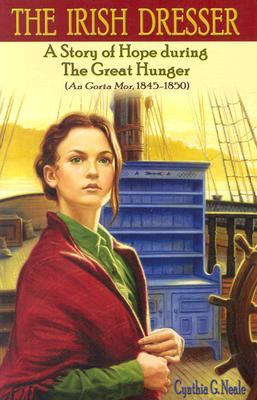The Irish Dresser: A Story of Hope During the Great Hunger (an Gorta Mor, 1845-1850)
Thirteen-year-old Nora McCabe narrates the story of her family and friends in mid-19th century Ireland, and the upheaval caused by the potato blight, in this short novel aimed at middle-school students and young adults. The McCabe family is poor but self-sufficient and happy, raising a few animals and working their small plot of land, which was once owned by their forefathers though they are now forced to pay rent on it to the English. They and their neighbors exemplify the old rural ways of Ireland—sharing what they have, coming to the aid of anyone in need, half-believing in the fairies and gods of ancient times. The dresser of the title is the one good piece of furniture owned by the McCabes; it holds their few pieces of crockery, and, often, Nora herself: she still fits inside the cupboard and it is her retreat when times are bad. Unfortunately, times become so bad that the McCabe family decides to leave Ireland for the promise of a better life in America, and the dresser plays a key role in getting Nora to that new life.
The story touches on the religious, political, and class issues as well as the agricultural woes of the time. Nora’s point of view may well offer today’s young readers a good window into that difficult chapter in history in spite of the narrative’s abrupt end, which leaves many questions unanswered. The further adventures of Nora are recounted in a sequel, Hope in New York City. Educational resources (lesson plans, glossary, bibliography) are included.










